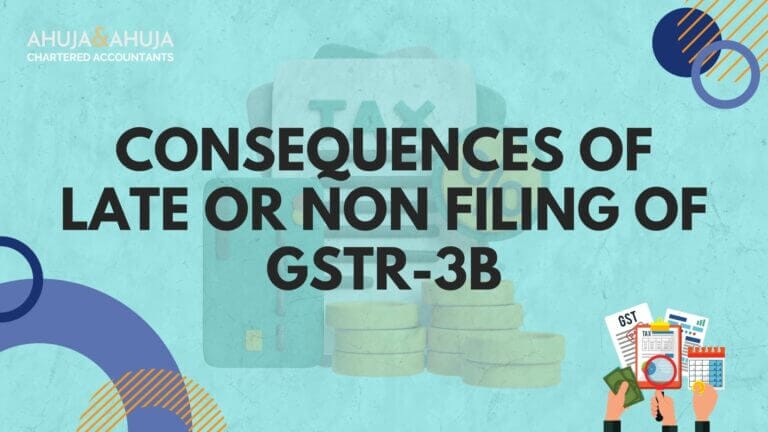GST Process & Procedure in case of Amalgamation of Business
Amalgamation characterizes the unification of two or more companies to form a single, more extensive entity. It’s a strategic maneuver often undertaken to amplify the corporate entity’s market reach, attain economies of scale, or diversify the business portfolio.
One lesser-explored yet crucial aspect of amalgamation involves the obligations towards Goods and Services Tax, or GST. The GST regulatory framework in India provides a comprehensive, multi-stage, destination-based tax scheme that is levied on every value addition throughout the supply chain. Effectively navigating GST implications is essential to ensure the smooth transition of an amalgamation process.
Implication of Amalgamation in GST Law
Amalgamation triggers numerous intricate financial transactions, each with distinct GST implications. With the fusion of distinct corporate entities, the acquirer (the transferee company) assumes the responsibilities and rights of the business it’s amalgamating with (the transferor company), as defined by the Companies Act of India.
One primary concern in any amalgamation process under the GST law is how to manage GST registrations. When an amalgamation move is completed, the transferor company’s legal existence terminates. Thus, its GST registration necessitates cancellation, as mandated by Section 29(1) of the Central GST Act.
The evolving business landscape leads to necessities like amalgamation and merger, but these activities can unspool complex situations within the purview of GST. Post amalgamation, the business landscape changes, and the tax obligations under GST run into unique considerations.
The amalgamation procedure, governed by the GST law, will also witness challenges concerning return filing, transition of Input Tax Credit (ITC), and GST registrations. It is here where GST Audit Services and even GST Litigation Services come into the picture to smoothen the integration.
This should provide the reader with a robust introduction to the topic and its overview. We’ll continue to delve into the processes and procedures of GST transitions during the amalgamation in the subsequent portions of the article.
Process & Procedure
A smooth transition during the amalgamation process requires careful attention to various steps and considerations. Let’s explore the key procedures that need to be followed to ensure compliance with GST regulations:
- GST Registration Post-Amalgamation: As mentioned earlier, the GST registration linked to the transferor company should be canceled after the amalgamation. According to Section 29(1) of the Central GST Act, an application for cancellation must be filed within a stipulated timeframe following the amalgamation event. However, it is crucial to address all pending transactions and open issues related to the transferor company before initiating the cancellation process.
- GST Consultancy Services can provide expert guidance in managing the GST registration process.
- Transitioning Smoothly: Steps and Considerations: To ensure a seamless transition, the following steps and considerations can be helpful:
- Add the premises of the transferor company as an additional place of business under the transferee’s GST registration.
- Instruct all suppliers of the transferor company to issue invoices using the GST registration number of the transferee.
- Inform both suppliers and customers about the amalgamation and the consequent change in the GST registration number.
- Maintain a communication log as proof of compliance during future audits or evaluations.
- Filing Returns During the Active Registration Period: Until the GST registration of the transferor company is surrendered, it must continue to file all requisite GST returns. This includes the annual return (Form GSTR 9) and the reconciliation statement (GSTR-9C) for the relevant financial year, encompassing the details of both the transferor and transferee companies. Future return requirements will depend on turnover and any exemptions granted.
- Transferring Input Tax Credit (ITC): One significant aspect of amalgamation is the transfer of unutilized ITC from the transferor to the transferee. The following steps need to be followed:
- The transferor company must file Form ITC-02, providing details of the merger and the transfer of ITC.
- Submit a Chartered Accountant (CA) certificate validating the transfer of all assets and liabilities.
- The transferee company needs to accept the transferred ITC on the GST portal.
- The Final GST Return: Once the amalgamation is complete and all related obligations are fulfilled, the transferor company’s GST registration is typically canceled. Following this, the final GST return, Form GSTR-10, must be filed within a specific timeframe after the registration cancellation.
- Clearing Misconceptions: It’s important to note that the dissolution of a company due to amalgamation does not negate its obligation to file requisite GST returns for the relevant financial year. Companies should continue to comply with GST rules, including filing monthly returns, until the GST registration is officially surrendered and canceled.
- Scope and Limitations: It’s crucial to understand that any legal advice or opinion in the context of GST compliance is based on specific facts and the prevailing legal scenario. Laws evolve, and businesses must stay updated with the most recent legal provisions and interpretations.
FAQs on Amalgamation and GST Law
Here are some commonly asked questions related to amalgamation and the GST law, answered in a simple and easy-to-understand manner:
Can the transferor company continue to use its GST registration post-amalgamation?
No, the transferor company’s GST registration needs to be canceled after the amalgamation is complete. However, during the transition period, it is important to maintain the registration for compliance purposes.
What happens to the pending transactions and open issues of the transferor company?
It is crucial to address all pending transactions and open issues of the transferor company before canceling the GST registration. This ensures smooth and efficient closure of any outstanding matters.
How should suppliers and customers be informed about the amalgamation and change in GST registration number?
It is recommended to formally notify suppliers and customers about the amalgamation and provide them with the new GST registration number of the transferee company. This can be done through written communication or any preferred mode of communication.
What is the role of maintaining a communication log?
Maintaining a communication log helps in providing evidence of compliance during future audits or evaluations. It serves as a record of communication with suppliers, customers, and other relevant parties regarding the amalgamation and changes in GST registration.
How can unutilized Input Tax Credit (ITC) be transferred from the transferor to the transferee?
The transferor company needs to file Form ITC-02, providing details of the merger and the transfer of ITC. A Chartered Accountant (CA) certificate validating the transfer of assets and liabilities should also be submitted. Finally, the transferee company must accept the transferred ITC on the GST portal.
Conclusion
The process of amalgamation in the context of GST law entails various considerations and obligations that businesses need to navigate diligently. By understanding and adhering to the procedures outlined by the GST law, companies can ensure a smooth transition without encountering any legal repercussions.
Amalgamation brings together multiple legal, financial, and operational aspects that must be managed effectively. Compliance with GST regulations remains a critical component of this process to ensure seamless integration and mitigate potential risks. Seeking expert counsel and meticulous planning of GST strategies during amalgamation are highly recommended.
As laws and regulations evolve, it is essential for businesses to stay updated with the most recent legal provisions and interpretations. Regularly consulting professionals, such as GST Consultancy Services, can provide invaluable guidance and ensure adherence to regulatory requirements.
In conclusion, amalgamation is a complex procedure, and compliance with GST regulations is imperative for its successful execution. By understanding the implications of GST in amalgamation and following the prescribed processes and procedures, businesses can ensure a seamless transition and optimize their operations in the post-amalgamation phase.
We hope this article has provided valuable insights into the implication of amalgamation in GST law and the necessary steps to facilitate a smooth transition. For any further queries or assistance, it is recommended to engage with legal and financial professionals well-versed in GST compliance and amalgamation procedures.
Thank you for reading!
Disclaimer
The materials provided herein are solely for educational and informational purposes. No attorney/professional-client relationship is created when you access or use the site or the materials. The information presented on this site does not constitute legal or professional advice and should not be relied upon for such purposes or used as a substitute for professional or legal advice.







